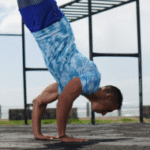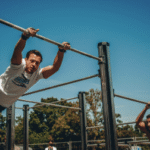How Private Calisthenics Sessions Are Structured for Success
let’s break down in detail how effective private calisthenics sessions are typically structured to ensure client success in the USA. A well designed session is more than just a random collection of exercises; it is a carefully planned experience that builds progressively towards your goals.
Introduction
When you invest in private calisthenics coaching, you are investing in a personalized and structured approach to your fitness. Effective coaches design sessions with specific components, each playing a crucial role in helping you achieve your strength, skill, and overall health objectives safely and efficiently. While individual sessions will vary based on your goals and progress, a common successful structure generally includes the following elements.
The Foundation: Initial and Ongoing Assessment
It is important to remember that all effective coaching begins with a thorough initial assessment, where your goals, abilities, and limitations are established. This understanding forms the basis of your program. Furthermore, good coaches conduct informal, ongoing assessments within each session to gauge your readiness and adapt the workout as needed.
The Typical Session Flow: A Step by Step Guide
First, Pre Session Preparation by the Coach. Before you even arrive, a dedicated coach reviews your long term program, notes from your previous session, your progress, and any feedback you have provided. They then meticulously plan the current session, outlining specific exercises, target repetitions and sets, appropriate progressions or regressions, and even contingency plans if an exercise proves too easy or too challenging on the day. This ensures the session is purposeful and aligned with your overall strategy.
Second, Client Check In and Dynamic Warm Up. The session usually starts with a brief check in. The coach will ask how you are feeling, if you have any new aches or pains, any soreness from previous workouts, or any successes or challenges you experienced since your last meeting. This helps them make any necessary last minute adjustments to the planned session. Following this, you will move into a dynamic warm up. This is not just generic cardio; it is tailored to prepare your body specifically for the movements and skills planned for that day. It typically includes light cardiovascular activity to raise your core temperature, followed by joint rotations and specific activation drills for the muscles and movement patterns that will be heavily involved in the main workout, such as scapular exercises before pull ups or wrist and shoulder preparation before handstand work. This step is vital for injury prevention and optimizing performance.
Third, Skill Development and Technical Practice. If your goals include mastering specific calisthenics skills like handstands, muscle ups, levers, or planche progressions, this work is often prioritized early in the session. During this phase, you are mentally fresh, allowing for better focus on complex motor patterns and fine motor control. The coach will guide you through specific drills, lead up progressions, and provide intensive, real time feedback on your technique. This component is crucial for building the neural pathways and refining the precise movements required for advanced calisthenics.
Four, Main Strength and Hypertrophy Training. This is the core component where you build the foundational and specific strength needed for your calisthenics goals. The coach will guide you through compound movements (like push up variations, pull up variations, squats, rows) and targeted accessory exercises. They determine the appropriate number of sets, repetitions, tempo (speed of movement), and rest periods based on your program and how you are performing on that day. Constant form correction and effective cueing are hallmarks of this phase. The coach ensures you are executing each movement safely and with maximum efficiency, and strategically implements progressive overload by making exercises harder over time through more challenging variations, increased repetitions or sets, reduced rest, or improved form under load.
Five, Conditioning or Metabolic Work (If Aligned with Goals). Depending on your objectives, such as fat loss, improved cardiovascular endurance, or increased work capacity, a conditioning segment might be included, often towards the end of the strength work. This could involve calisthenics based circuits, high intensity interval training (HIIT) using bodyweight exercises, or specific endurance drills.
Six, Cool Down and Targeted Mobility or Flexibility. After the main work is done, the session will typically conclude with a cool down period. This involves gentle movements to gradually bring your heart rate down. This is also an opportune time for targeted static stretching or specific mobility drills. These drills can focus on muscles worked during the session to aid recovery or target areas where you have restrictions that might be limiting your progress in certain calisthenics movements.
Seven, Session Review, Feedback, and Forward Planning. The final few minutes are usually dedicated to a quick review of the session. The coach will provide overall feedback on your performance, highlight successes, offer encouragement, and identify key takeaways or points to focus on for next time. This is also your opportunity to ask any remaining questions or share how you felt during the workout. They might also briefly outline the plan for the next session or assign “homework” such as specific mobility exercises or light practice drills.
Eight, Post Session Documentation (Coach’s Work). Though you might not see this part, after the session, a diligent coach will document key details: exercises performed, sets, reps, loads or variations used, your feedback, and their observations on your performance and technique. This record keeping is vital for tracking your long term progress, making informed adjustments to your program, and ensuring each future session builds effectively on the last.
The Pillars of This Structure: Why It Works
This methodical, multi component structure is designed for success because it is comprehensive and systematic. It addresses all facets of development: skill acquisition when you are fresh, strength building through progressive overload with a focus on quality movement, conditioning if needed, and recovery and mobility work. The constant feedback loop and personalization inherent in private coaching ensure that this structure is continuously adapted to your evolving needs and abilities.
Conclusion
A well structured private calisthenics session, guided by a knowledgeable coach, is a far cry from simply going through a list of exercises. It is a dynamic, interactive, and purposeful experience meticulously designed to move you closer to your goals. Each component, from the tailored warm up to the focused skill practice, strategic strength work, and dedicated cool down, plays an integral part in ensuring your progress is safe, efficient, and sustainable, ultimately leading to the successful achievement of your calisthenics aspirations.

How Private Calisthenics Sessions Are Structured for Success
Route
Calisthenics Gym Houston Functional Bodyweight Training
Secondary phone: (346) 483-3195
Email: info@calisthenicsclubhouston.com
URL: https://calisthenicsclubhouston.com/
Monday 6:00 AM - 7:00 PM Tuesday 6:00 AM - 7:00 PM Wednesday 6:00 AM - 7:00 PM Thursday 6:00 AM - 7:00 PM Friday 12:00 PM - 6:30 PM Saturday 9:45 AM - 12:00 PM Sunday 3:00 PM - 5:00 PM





